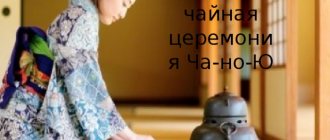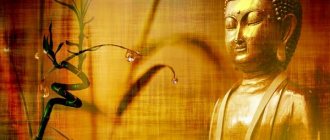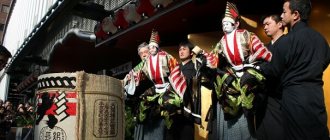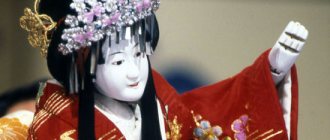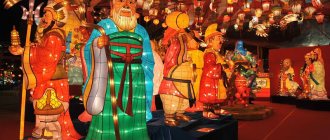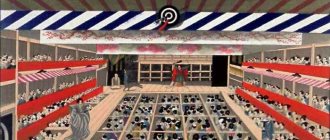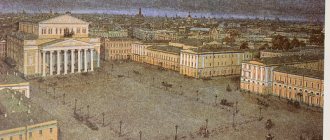Japanese theater presentation
Japanese theater:
Noh and Kabuki
But: theater of the image
Noh (or Nogaku) is the oldest form of Japanese theater. It took shape in the XIV-XV centuries.
Noh is the oldest classical Japanese theater. "But" means ability or skill. Noh performance is dance, drama, music and poetry combined on one stage. In the 14th century, the "no" theater existed in the form of ancient temple performances, where plays on mythological subjects were performed. Troupes of “no” actors were under the patronage of Japanese monasteries. “But” performances combined the functions of entertainment and preaching.
The Origins of Noh Theater
Gigaku performances were held in open areas of Buddhist temples and monasteries. A mandatory part of the performance was a procession in masks. All skits were performed accompanied by religious music. More than 200 Gigaku theater masks have survived.
The earliest forms of this art form were gigaku and dengaku.
The first gigaku performance was held in 612.
Gigaku and Dengaku
Gigaku literally means “skillful music.” Purely religious and temple. Didn't last very long. Gigaku is a unique dance that originated in India. Initially, it was an ancient ritual dance performed in front of the image of a deity in general, and then only in front of the image of Buddha. In it, individual episodes from the life of Buddha were reproduced using choreography. From India, these dances were brought to the southern Chinese kingdom of Wu (in Japanese - Go), and from there to Korea. In the 6th century, along with the spread of Buddhism, this dance school appeared in Japan, where it was first called gogaku - “go music”, and then gigaku, i.e. “skillful (virtuoso) music”
Gigaku performances were held in open areas of Buddhist temples and monasteries. A mandatory part of the performance was a procession in masks. All skits were performed accompanied by religious music. More than 200 Gigaku theater masks have survived.
Dengaku (literally field music), a Japanese medieval theatrical musical performance.
Bugaku and Surugaku
This type of performance replaced bugaku and sarugaku.
Bugaku: (“art of dance”), dances adopted from continental culture in the 7th century. They became an indispensable part of temple holidays and palace ceremonies, and over time grew into a separate musical and dance genre, which not only survived, but after the restoration of imperial power in 1868 experienced a new heyday and is now performed for a wide audience in concert halls.
Surugaku - there was a comedy pantomime, clowning, songs, dances, acrobatics. At the end of the 18th - beginning of the 9th century, bugaku was performed by professional actors. Elements of bugaku served as the basis for the classical music and dance art of Japan. Surugaku performances included court, ritual and village songs and dances. A special form of theatrical performance arose - surugaku-no, which became the prototype for future performances of Noh theater.
Actors and masks
The first performances of the Noh theater were held in Buddhist monasteries, in the castles of the aristocracy and military rulers - the shoguns (from the house of Ashikaga), who took the Noh theater under their patronage.
Area
Noh theater performances took place on a square platform, open on three sides and covered with a roof supported by four pillars. At the back of the stage there is a backdrop with an image of a green spreading pine tree on a golden field (a symbol of longevity, a benevolent greeting to the audience).
There is no scenery in the No theater. The orchestra members are located at the back, and the choir is located along the right side of the platform. The rows for spectators are in front of the front and left sides of the site.
Choir
A significant place in the plays is given to the choir, which actively intervenes in the action, explains situations, expresses its emotions and impressions, and evaluates what is happening. The choir consists of eight male singers.
Expressive means
The mask is the main means of expression in Noh theater. The costume serves to create the color scheme of the performance. The main stage prop is a folding fan, with the help of which the performer conveys various emotional states.
Orchestra
The action is accompanied by an orchestra consisting of a flute, two tambourines and a drum.
Roles
The play involves two actors - site - the actor (protagonist), playing the main role, and waki - the assistant. In some plays there are also tsure - companions of the main characters who do not have independent functions. All performers (including female roles) are men.
The stage speech of No theater actors is expressive - it includes colloquial and declamatory dialogues, dramatic recitative, and ariosous singing.
Noh Theater World
Noh theater is symbolic. The heroes of Noh theater plays are gods - characters of the Buddhist and Shinto cults, as well as men - court aristocrats, warriors, people from the people; women - court ladies, concubines, maids. The creators of the Noh theater believed that the entire diversity of the world was represented on the stage of their theater. The plays of the Noh theater are built on global conflicts - they are connected with the central theme of a person’s personality and his destiny. The plot of plays can be tales, religious legends, historical and religious legends, historical chronicles and literary works.
Masks
In dramaturgy, Noh theater is based on two aesthetic concepts: imitation of reality (monomane) and the concept of inner meaning (yugen).
Noh plays consist of an introduction, climax and ending. They correspond to the performing style: slow part, stormy, fast and final coda. The main element of the drama is the “transformation” of the hero: at first he was a man - he became a god, at first he was a warrior - then his afterlife spirit.
Transition masks
Founders No
The founders of the Noh theater are considered to be Kanami Kietsugu and his son Seami, who was not only the creator of plays, music and dances, but also the theorist of the Noh theater. The Noh theater troupe was built on a guild principle - headed by a master. In the XIV-XV centuries there were five such troupes, each of which, working in line with tradition, still had its own style and its own school of Noh art.
Kabuki: theater of men
Kabuki is a type of Japanese theater that developed in the 17th–18th centuries. (MAIN DIFFERENCE)
Since the end of the 17th century, a special dramaturgy for the Kabuki theater has been formed - conversational drama. These dramas were close to reality and told about events among the inhabitants of the “love quarters”, about family problems of different social groups of Japanese society. On this basis, an everyday drama - sevamono - developed.
Permanent role
At the beginning of the 17th century, troupes of men began to form, and a special role for performers of female roles (onnagata or oyama) developed and became permanent. These troupes performed in permanent premises of the largest cities in Japan - Kyoto, Osaka and Edo (Tokyo).
Jeruri and the development of Kabuki
The basic aesthetic principle of Kabuki is “the art of being between what is and what is not.”
The following roles have developed in the theater:
- hero,
- the villain,
- young girl,
- young man,
- matron,
- old man,
- comedian.
Path of the East
Frequent changes of scene in Kabuki performances required a quick change of scenery - this was achieved by using a rotating stage, moving the scene of action to the proscenium and hana michi (“flower path”) - a boardwalk rising above the stalls and serving as a passage from the stage through the auditorium. The “Flower Path” was intended mainly for the scenes of the “arrival” and “departure” of the characters.
Dzeruri – puppet theater
In the second half of the 18th century, the repertoire of the Kabuki theater included jeruri - puppet theater plays. The performances retained the obligatory narrator, who led the story to the accompaniment of a three-stringed shamisen, while the actors reproduced effective scenes in pantomime. Scenes of battle and travel were performed to the music, and the hero’s experiences were outlined.
Modern Kabuki
- Show all the colors and philosophy of the oriental theater.
- To introduce the directions and development of the main theaters in Japan.
- Consider the Noh and Kabuki theaters as the world of the East.
Goals and objectives
- Collect text and visual materials.
- Make a computer presentation.
- Make a stand on a given topic.
Bibliography
- https://dic.academic.ru/dic.nsf/ruwiki/499392
- https://japan.rpg.ru/texts/dances.shtml
- https://www.nihon.ru/culture/theaters.asp
- https://www.tokyotown.ru/guide/noh_theater.htm
- https://www.100velikih.com/view1135.html
Theater of Japan presentation for the Moscow Art Theater lesson (grade 10) on the topic
Slide 1
Traditions and history of Japanese theater A presentation for 10th grade students was prepared by Ivanova N.S., teacher of the MHC MBOU "Yurka Secondary School"
Slide 2
Theater of Japan The traditions and history of Japanese theater are rooted in the very distant past. The direct continuity of the tradition can be traced back almost a millennium and a half, to the era when Buddhism penetrated into Japan from the mainland, and with it music and dances from China, India, and Korea. The most important attributes of traditional Japanese theater: masks and dances were used in the pre-Buddhist Kagura performance, reminiscent of shamanic dances, which was part of the Shinto ritual of worship.
Slide 3
Theater of Japan Traditional Japanese theater is a complex and multicolored world. Types of Japanese theater: - Noh theater; - Kyogen Theater; - Kabuki theater; - Joruri Theater; - Yose Theater; - Bunraku Theater
Slide 4
The most important attributes of traditional Japanese theater: masks
Slide 5
Noh Theater Noh Theater originated in the 14th century and quickly became fashionable among the samurai and the highest aristocracy of the Tokugawa shogunate. That is, Noh theater was initially aimed at the upper class and was inaccessible to the general public. Nowadays, of course, anyone can attend a Noh theater performance.
Slide 6
Accompanied by a choir, drums and flutes, the main character or Shite tells stories from the lives of mortals and spirits, gods and demons, battles won and lost, murderers and Buddhist monks of archaic Japan. The archaic language in which the story is told deepens the “great mystery” of the masks.
Slide 7
Kyogen Theater Kyogen Theater arose at approximately the same time as the Noh theater, and to this day these two types of Japanese traditional theatrical art peacefully coexist within the same decade, but in style and content these two genres are strikingly different. Noh theater is a drama of sublime experiences and titanic passions; in spirit it is a high tragedy, although the content of the plays is not always tragic. Kyogen, on the other hand, is a simple comedy, a crude farce, built on a simple joke, noisy fuss, even obscenity. But elegant, poetic, Kyogen is prosaic and common people.
Slide 8
Kabuki Theater At the beginning of the Tokugawa era, the democratic theater of Japan was finally born, flourished and bore fruit. It was a Kabuki drama. Ritual dances were often performed to entertain worshipers at the Shinto shrine in Izumo. They are still performed to this day at Shinto shrines in Nara and other places. Young girls in thin capes over white kimonos and scarlet hakama, with flowing hair and beautifully made-up faces, dance in the temple hall.
Slide 9
During performances, the rooms were always crowded, and the popularity of Kabuki was so dizzying that the Edo samurai fell madly in love with the dancers and staged fights in order to win their sympathy. This seemed unnecessary to the authorities, and they decided to ban the troupe’s performances, although the ban was more likely caused by the behavior of the Edo gentlemen than by the activities of Kabuki himself. The government of the third shogun, Iemitsu, issued a strict decree in 1629 prohibiting any performances involving women.
Slide 10
Joruri Theater The roots of puppet theater in Japan go back to the kugutsushi, hunters who, in their spare time, amused themselves by making puppets and performing impromptu puppet shows. Puppet shows were later staged by followers of the Buddhist Jodo sect, using Buddhist scenes for puppet scenes. Some of these traveling monk-actors had a miniature stage, the so-called kubike, suspended from their necks by cords.
Slide 11
Yose Yose Theater is a traditional chamber comedy theater. The performances of this theater belong mainly to the genre of rakugo (literally - “stories with a comic ending”) - comic and sometimes satirical stories, full of witticisms and puns, with an unexpected ending. They developed from jokes created by professional storytellers - rakugoka. The performer, usually dressed in a kimono, sits on the stage on a seat cushion. The only props he has in his hands are a fan and a towel.
Slide 12
Bunraku Puppet Theater Bunraku is the largest puppet theater in Japan, a keeper of traditions, named after the organizer and director of the first performances, Uemura Bunrakuken (1737–1810). The combination of a puppet show with the folk song tale of joruri, performed to the accompaniment of shamisen, dates back to the end of the 16th - beginning of the 17th centuries. Dolls for Bunraku performances are made in the size of 1/2 - 2/3 of human height. Each puppet is usually handled by three operators.
